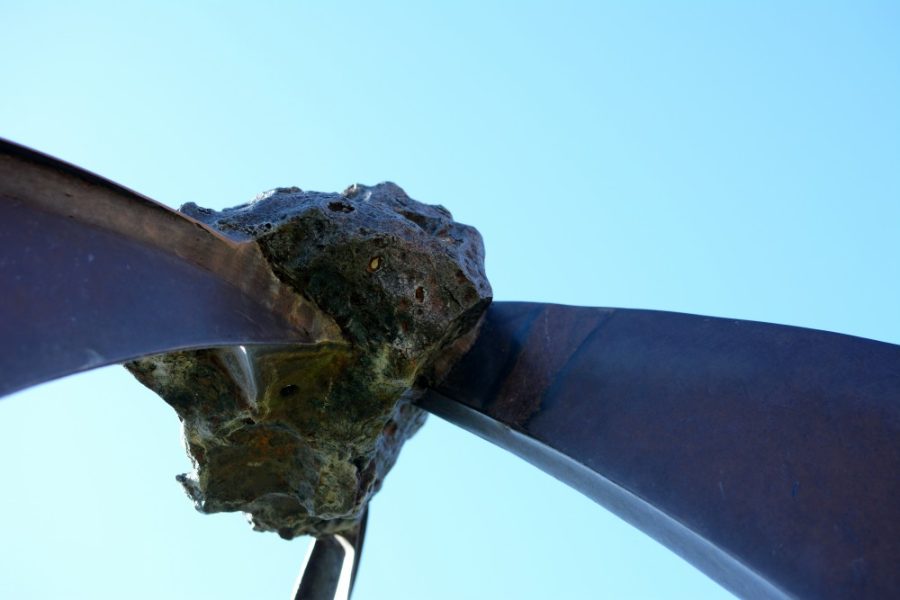The secret to life could be locked in the stars. The OSIRIS-REx spacecraft aims to discover more about life on Earth by sampling near-Earth objects.
The OSIRIS-REx mission has facilities across the nation, including some at the UA. These facilities consist of teams comprised of an array of different types of scientists, engineers and managers. Each team focuses on a certain aspect of the mission.
The mission’s objectives are to return and analyze a sample of asteroid Bennu, map the asteroid, document the sample site, measure the orbit deviation caused by non-gravitational forces and compare observations to ground-based observations, according to the OSIRIS-REx webpage.
The OSIRIS-REx mission aims to have a deeper understanding of the properties of Bennu and gain a higher understanding of its importance in relation to life on Earth.
But none of this could be accomplished without the help of the Science Processing and Operations Center team. The SPOC team’s work aims to allow a spacecraft to work more quickly on-site, which could change the project’s timeline from decades to days, while concurrently allowing the spacecraft to gather more specific samples.
“A lot of the high precision, navigation, and science operations’ flight dynamics decisions is a new philosophy of executing a mission that hasn’t been tried before,” said John Kidd, a SPOC science operations planning engineer.
Kidd said that since Bennu’s discovery in 1999, ground-based observations have led them to believe Bennu is in orbit around the sun. Bennu is also thought to be relatively carbon-rich compared to other asteroids.
“We actually don’t know a whole lot about Bennu very concretely,” Kidd said.
Scientists have also predicted the rotational axis, size and density of Bennu, among other things.
“What does a carbonaceous asteroid actually look like when you get up close?” Kidd said.
The OSIRIS-REx mission is particularly challenging for the SPOC team because Bennu’s environment is unknown. Bennu has a radius of approximately 250 meters, which makes navigation to the asteroid very unpredictable and extreme.
“We expect to recalculate the spacecraft orbit several times over the course of the mission,” Kidd said.
The data that the OSIRIS-REx mission gathers will help answer questions about where we came from. According to Kidd, there are still a number of open-ended theories regarding the origin of water and life on Earth. The mission to Bennu hopes to add insight to these questions.
Bennu may contain molecular precursors to the origin of life and Earth’s oceans, according to the OSIRIS-REx webpage. The asteroid also has a high probability of impacting the Earth in the late 22nd century.
The mission also hopes to find what kind of trace elements, if any, are on Bennu, so that it could possibly be mined for resources. Knowing the asteroid’s properties, such as density and mass, is important for determining how to respond to a possible future collision threat.
One side of the SPOC team focuses on science processing. This part of the team builds software that will process data gathered from the spacecraft and build things like maps, which will help the science team analyze the data efficiently.
READ: Behind the scenes of OSIRIS-REx and the SPOC team that keeps everything running
“We take the data coming down from the spacecraft and we turn [it] into images, mostly, and other maps and spectrometer data, and that sort of stuff,” said Austin Cummings, an OSIRIS-REx systems programmer.
The team is currently working on a website that will grab and analyze the data gathered, according to Cummings.
The operations side of the SPOC team plans out the steps of the missions using calculations to find the correct trajectory for the spacecraft at any given time. The calculations are uploaded to the spacecraft so that it can collect data to be analyzed later by the science processors.
The SPOC team’s work isn’t just for OSIRIS-REx, though. The team’s work can be applied to other missions in the future. For example, there are companies that are looking at mining the asteroid belt for water, carbon materials and rare metals. Their work can also be applied to NASA’s ARM mission, which plans to take a large sample of the moon.
Despite the challenges and anxieties that the SPOC team has faced, the mission has made a lot of progress. Cummings said he is about 50 percent nervous, 50 percent excited about the launch date.
“I always go up and look at the [countdown clock and think], ‘that used to say 900 days and it felt just like yesterday,’” Cummings said.
OSIRIS-REx is expected to launch in September 2016.
Follow Renee Conway on Twitter.









